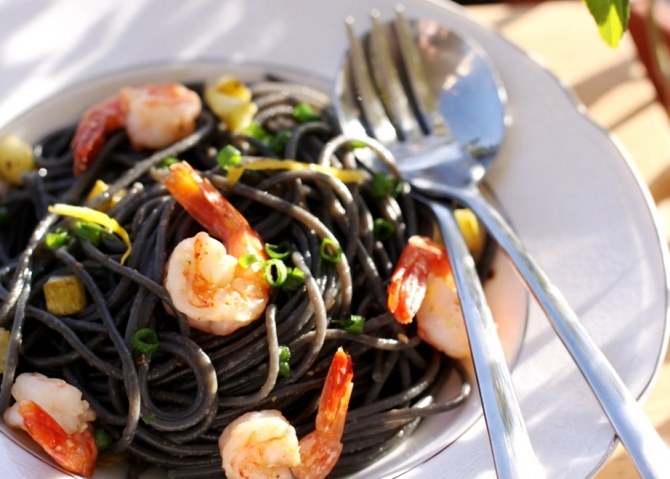What "cuttlefish" and where are the ink
Cuttlefish – large molluscs known to mankind since ancient times. On the table first came the meat of the clam, later people learned how to ink and use them for writing. At that time about using ink in cooking was not considered.
Cuttlefish ink is prepared from a pouch located between the viscera of the mollusk. This ingredient is widespread in the countries of the Adriatic and the Mediterranean. On sale ink is ejected in the form of packaged, closed packaging at 4 g frozen and stored at sub-zero temperatures. To prepare one serving of cooks use 1-2 sachets. Often on the counter, you can find glass jars or bottles with a thick paste of ink, packaged in 500 g
The secrets of culinary masterpieces
The ink pasta not only has a spicy taste, but very original form when filing. The dough for these pasta kneaded in the same way as normal. In the process of kneading the mass of flour, eggs and water add the ink. Cook the pasta an unusual black color is possible and in house conditions, on 1 kg of a flour take 6-7 chicken eggs and 16 g of ink, a bit of dry white wine and a pinch of salt. Knead tight dough, roll out into thin layer and cut.
In industrial conditions the dough is passed through the pasta machine. In stores you can find ready-made pasta that require boiling. However, dry products have one significant drawback – they do not smell like the sea, but still delicious and useful.
Pasta with ink is boiled in plenty of water and use the following recipe. The perfect duet with pasta is tuna, seafood, thick tomato and cream sauces. To emphasize the taste will help dry wine and Parmesan cheese. It is rarely possible to combine ink with meat, except for chicken, which is used in the preparation of complex Spanish paella.
And is there any benefit?
Pasta with cuttlefish ink is not only delicious, but also useful. Small quantities of the substance include drugs to combat insomnia, bronchitis, neurosis, mental disorders, menstrual disorders, and even herpes. These dishes are recommended for those striving to improve the metabolism and to care about cholesterol.
In 100 g of ink contains proteins of 16.78, fat – 0,79, carbohydrate – 0,93. The caloric value is 79 kcal.
